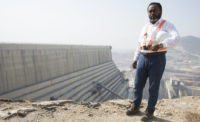Economic forecasts for the U.S. are reflecting a happier vibe.
To be sure, long-term U.S. Treasury bond interest rates are lower than those for short term bonds—a phenomenon known as an inverted yield curve that has typically been followed by recession. Office building and shopping mall construction is way down, and huge future bank write-offs for real estate loans and mortgages are possible. Massive federal debt and spending and debt ceiling deadlocks recently spooked financial markets, and the Federal Reserve is likely to notch interest rates up again in coming months.
But general inflation rates are falling, profits are down but still substantial, real wages are growing and Wall Street’s happy July surge added to the good spirits. Confidence that was lacking only 60 days ago has reason to return.
For more than a year, dread of recession had haunted the Federal Reserve’s crusade to reduce inflation. Last year there were two consecutive quarters of shrinking GDP. Just last month, construction economist Anirban Basu predicted during an industry-sponsored webinar that the economy is “going to get worse before it gets better.” While it is currently “humming along, and is much stronger than I would have expected at this point,” Basu contended on July 26, he also noted that a recession “will come in the next 12 months.”
Federal Reserve Chairman Jerome Powell had been predicting for months that despite continued interest rate hikes to drive down inflation, the Fed expected the U.S. economy to land softly, without a recession. There were good reasons to be skeptical, and few economists agreed.
As recently as this past March, Ken Simonson, Associated General Contractors chief economist, hedged his forecast of whether the economy would touch down lightly during the inflation struggle, or crash. “I think the term that fits best is ‘touch and go,’” he said. In July, Simonson then said that the “likelihood of recession remains high.”
Then on Aug. 2, one of the biggest U.S. banks, Bank of America, steered its economic forecast in a new direction. It set aside its earlier prediction of a mild recession in 2024 and forecast U.S. inflation falling back to the 2% range next year—the Federal Reserve’s target—with no recession at all.
So let’s stay wary of predictions. Public works and government spending have been propping up the construction industry as private sector opportunities fell off. The economy remains vulnerable to hiccups in financial markets, banking, energy prices, domestic political conflict, mass migration, climate change, war and sudden unexpected Black Swan types of events.
But instead of being weighed down by gloom, it’s time to do what some already are doing—evaluating opportunities, diversifying prudently, holding on to valuable veteran staff, cultivating new talent and preparing for what could be another era of growth where engineering and construction are integral to the general prosperity.




Post a comment to this article
Report Abusive Comment